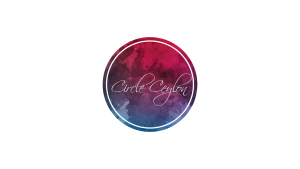Unawatuna
Unawatuna is a coastal town an a major tourist attraction in Sri Lanka and known for its beach and corals. It is a suburb of Galle, about 5 kilometres southeast to the city center and approximately 108 kilometres south of Colombo. Unawatuna is situated at an elevation of 5 metres above the sea level. Despite significant development in the last decade it is still home to the endangered and endemic purple-faced langur, an usually shy monkey species that can only be found in Sri Lanka’s forests. The remnant population in Unawatuna needs to be recognised and the remaining forest cover should be protected to preserve this beautiful creature. This will in turn provide unique opportunities for eco-tourism that will benefit all local communities and stakeholders as well as the environment and ecology.
Legend & Folklore
The description of the beach paradises in Valmiki’s epic Ramayana sounds like Unawatuna.
“a seashore dotted with thousands of trees, coconuts, and palms dominating, strings of houses and hermitages along the coastline, human beings and superior beings such as Gandharvas, Siddhas, and ascetics, living in them and countless bejewelled celestial nymphs thronging the shore, the coast intermittently visited by heavenly beings, Gods and demons.”
Unawatuna traces its roots to the great epic Ramayana
Roots
Unawatuna traces its roots to the great epic Ramayana. In the epic, the monkey-warrior Hanuman was sent back to India to fetch the four medicinal herbs by Jambavan namely, mritasanjeevani, vishalyakarani, suvarnakarani, and sandhani from the Himalayas in order to heal Lakshman who was wounded trying to save the abducted Princess Sita from the demon king Ravana. Hanuman failed to identify these herbs, so he lifted the entire mountain and carried it to the battlefield to try to save Lakshman, but in the process, a chunk of it “fell-down” in the location of the present day Unawatuna, the name of the village derives from “Una-watuna” meaning “fell down”.
Currently, an edifice is being built in honour of Hanuman on the harbour end of Rumassala Hill by Japanese monks of the Mahayana sect of Buddhism near the Peace Pagoda that they built.
Religious Beliefs
It is said that he lived in Unawatuna and helped the people in various ways. Over the years he has been venerated and worshiped, and the Kovil (or Devalaya) on the west end point of the bay which has a history of over a thousand years is believed to be the abode of this Devol deity.
In later years a Buduge, or House of Buddha, and the Swethamalee Chaitiya, or Dagaba, was built on the hillock abutting the Devalaya, or House of Gods. Thousands of pilgrims throng to this place of worship every month of Esala to offer poojas. This festival is a new rice offering so most cultivators bring a share of their crop and pray for timely rain and plentiful harvest. Some others save a fistful of rice from their daily meal and offer that rice, still others would purchase a few measures or even full gunnies of rice along with coconuts to offer.
The Dutch
After defeating the Portuguese at the Fort of Negombo, the Dutch sailed south and landed on Unawatuna in 1640 and marched to Galle. The Portuguese had encountered the Dutch soldiers at Magalle (where Closenburg Hotel is now located), and fierce fighting took place there. Over 400 Dutch soldiers were killed, and only 49 Portuguese could manage to get back to their fortification in Galle, where they were held in siege for four days before they surrendered.
The Dutch built houses for their officials in Unawatuna. These constructions include the Nooit Gedacht hotel, Unawatuna Hospital and the mansion Maharambe. UBR hotel is situated on a land called Parangiyawatta, meaning “land of the Portuguese”, and the area nearby is known as Ja-kotuwa, suggesting that it was the settlement of Ja or Javanese people better known as Hollanders and there may have been some fortification.
The Galle tower or Edwards Pillar in Rumassala Hill is believed to have been a fake lighthouse built during World War I, and the area is shown as property of the British Admiralty in old survey maps.
Unawatuna & Biodiversity
Unawatuna is rich in its biodiversity. Its greatest potential attraction for eco-tourism was the marsh land or mangrove, Kadolana, which was partially dredged and filled to develop a hotel for a German hotel chain. The development never eventuated. Many locals believe it to have been cursed for being built at the doorstep of the Wella Devalaya.
Over sixty species of endemic birds, including terns, egrets, herons, sandpipers and kingfishers, as well as rarer species such as the lesser whistling duck, the Asian palm swift, the white-breasted waterhen, the Loten’s sunbird and the black bittern have been sighted in the locality by the ornithologist, Clive Byers. These birds are mostly sighted in the remaining marshy area and Rumassala Hillock.
Corals
Off the coast of Unawatuna, beneath the Indian Ocean lies a number of coral reefs, shipwrecks, and a great variety of fish and turtles. The turtles still wade onto the shore to lay their nests and eggs, and at times, as if to lay first claim to the sandy shore now invaded by the tourists and dotted by restaurateurs, even go right into the beach front restaurants .
The Rumassala coral reefs at the east end of the Galle Harbor attract divers, but are now endangered due to possible port development. Eco treks in the shrub jungles of Rumassala are also available.
2004 Tsunami
The 2004 Indian Ocean tsunami swept away many beach front restaurants and has devastated the sandy beach to a great extent, marring what was once claimed to be one of the twelve best beaches in the world. It is still considered to be one of the best 100 beaches of the world.
The Department of Coast Conservation was hard pressed to implement a coastal resources management plan under the Asian Development Bank plan[citation needed], but did not spring into action on the aftermath of the tsunami.
Transport
Unawatuna is located on the Coastal or Southern Rail Line (connecting Colombo through to Matara), and the A2 highway, connecting Colombo to Wellawaya.
Things to do while in Unawatuna
Unawatuna Beach and coral reefs
Japanese Peace Pagoda
Yatagala Raja Maha Viharaya Buddhist Temple
Turtle hatcheries (Habaraduwa)
Go Surfing
Visit The Dog Care Clinic In Unawatuna
Visit Galle Fort
Go Snorkelling At Jungle Beach
Swim With The Turtles
Go Whale Watching








